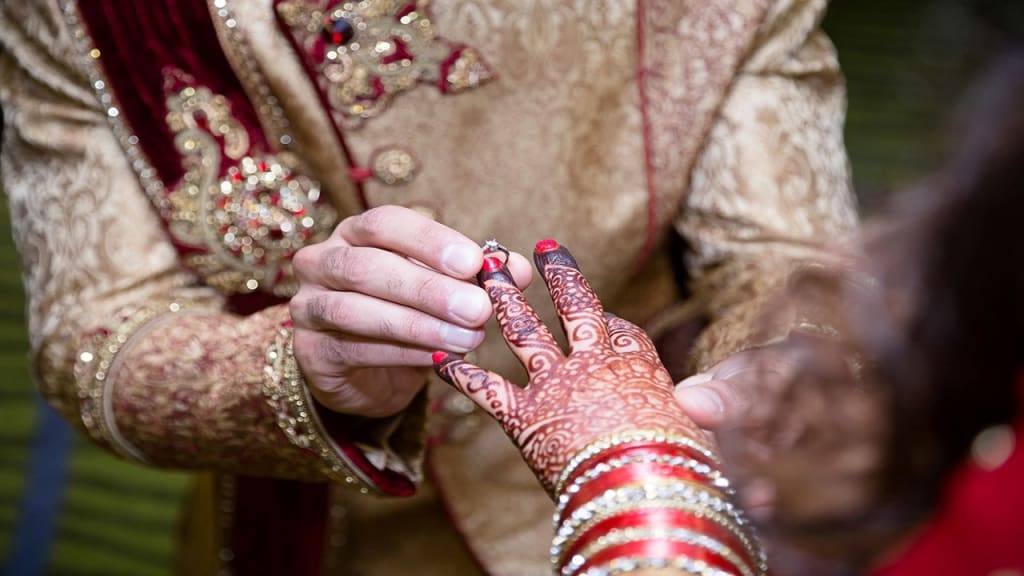Vatta Satta: The Ancient Marriage Ritual of Punjab
A Traditional Exchange of Marriages and Its Societal Consequences

Introduction:
Vatta Satta is an age-old marriage ritual deeply rooted in the cultural fabric of Punjab, a vibrant region in northern India. This unique tradition involves the exchange of marital relationships between two families, where a girl from one family becomes the wife of a boy from the other family, and vice versa. In this article, we will explore the rich history, significance, and evolution of Vatta Satta as a traditional marriage practice in Punjab. We will delve into the customs, social dynamics, and the impact of this ritual on familial relationships and community cohesion.
The Origin and Historical Context:
The origins of Vatta Satta can be traced back to ancient times when marriages were often arranged to strengthen social and economic ties between families. In Punjab, where agricultural communities were prevalent, this ritual served as a means to consolidate landholdings, unite families, and ensure stability and support for both sides.
The term "Vatta Satta" itself signifies the exchange of marital relationships. "Vatta" refers to the exchange, while "Satta" means to give or offer. This ritual represents a mutual agreement between families to unite their children in matrimony, creating a bond of kinship and shared responsibilities.
The Mechanics of Vatta Satta:
Vatta Satta involves a reciprocal arrangement, where a girl from one family is married to a boy from the other family, and in return, a girl from the second family becomes the wife of a boy from the first family. This practice ensures a balanced exchange of marital relationships, fostering equity and mutual obligation between the families involved.
The process begins with discussions and negotiations between the families. Factors such as compatibility, social standing, economic status, and the well-being of the children are taken into consideration. Once an agreement is reached, the weddings are planned simultaneously, with one family hosting the wedding of their daughter and the other family hosting the wedding of their son.
On the wedding day, both families come together in a joyous celebration. The weddings may take place in separate venues, but the exchange of marital relationships cements the bond between the families. The couples, bound by the Vatta Satta agreement, embark on their married lives, fulfilling their duties and responsibilities to their respective families.
Social and Cultural Significance:
Vatta Satta holds immense social and cultural significance in Punjab. It serves as a means of strengthening familial ties, fostering unity, and creating a sense of community cohesion. This ritual is deeply embedded in the social fabric of Punjab, reflecting the values of reciprocity, trust, and interdependence.
Consolidation of Relationships:
Vatta Satta establishes a strong bond between the two families involved. The exchange of marital relationships creates a sense of interconnectedness, where the well-being and prosperity of one family directly impact the other. This bond extends beyond the couples themselves, encompassing their parents, siblings, and extended relatives. The mutual support and cooperation between the families create a web of relationships that goes beyond the individual marriages.
Economic and Social Security:
In agrarian societies like Punjab, Vatta Satta served as a mechanism to ensure economic and social security for both families. By exchanging marital relationships, families were able to consolidate their landholdings, resources, and labor. This arrangement provided a sense of stability, as the families could rely on each other for support in times of need. Additionally, the shared responsibilities and obligations reinforced social ties and the interdependence between the families.
Promotion of Gender Equality:
Vatta Satta, in its essence, promotes gender equality within the marital relationship. As both families participate in the exchange, it creates a sense of balance and equal importance placed on both the bride and the groom. This contrasts with traditional arranged marriages, where the focus is often centered around the groom's family. Vatta Satta empowers women by acknowledging their role as equal partners in the marriage and providing them with a support system within their new family.
Strengthening Community Bonds:
The practice of Vatta Satta extends beyond the immediate families involved, fostering a sense of community cohesion. The weddings become community celebrations, where neighbors, friends, and well-wishers come together to rejoice in the union of two families. This communal support and participation strengthen the bonds within the community, creating a network of social connections and shared values.
Evolution and Contemporary Perspectives:
As society has evolved and cultural norms have changed, the practice of Vatta Satta has experienced transformations. Factors such as urbanization, globalization, and shifting perspectives on individual choice and autonomy have influenced the way Vatta Satta is perceived and practiced in modern times.
While Vatta Satta continues to hold significance in some rural areas of Punjab, its prevalence has decreased in urban settings. The shift towards individual choice in marriage, increased emphasis on compatibility and personal happiness, and the influence of legal frameworks have led to a decline in the practice of Vatta Satta. Many families now opt for more conventional arranged marriages or prefer love marriages based on mutual affection and compatibility.
Conclusion:
Vatta Satta, an ancient marriage ritual of Punjab, represents the exchange of marital relationships between two families. It reflects the values of reciprocity, unity, and interdependence within the community. Although the practice has evolved over time and its prevalence has decreased in urban areas, Vatta Satta remains a testament to Punjab's rich cultural heritage and the significance of familial bonds. By exploring and understanding this tradition, we can gain insights into the historical, social, and cultural dynamics that shape marriages in Punjab and appreciate the enduring legacy of Vatta Satta in the region's cultural tapestry.

In conclusion, while Vatta Satta may have had historical significance, its negative consequences and social implications cannot be overlooked. The commodification of women, lack of agency, perpetuation of gender inequalities, and various associated social issues highlight the need for a shift away from this practice. By fostering a society that upholds individual rights, autonomy, and equal partnerships, we can strive for a more inclusive and progressive future where marriages are based on consent, choice, and mutual respect.
About the Creator
Dr. Amjad Ali Bhatti
Dr. Amjad Ali Bhatti is a multifaceted individual who has made significant contributions in the fields of research, translation, literature, and social activism.






Comments
There are no comments for this story
Be the first to respond and start the conversation.